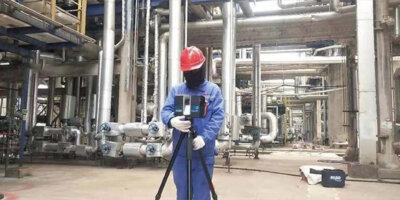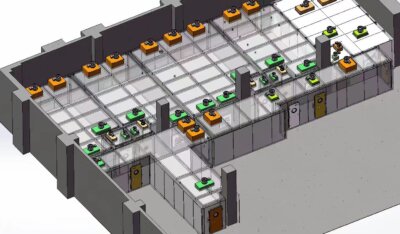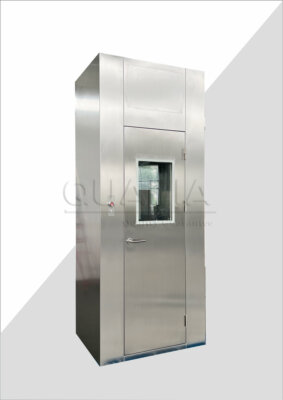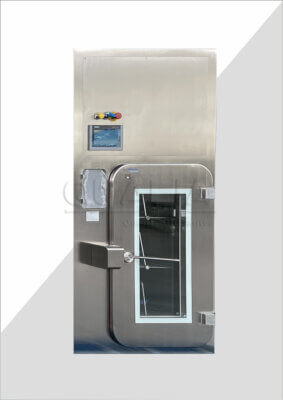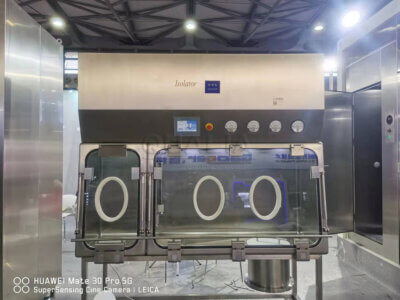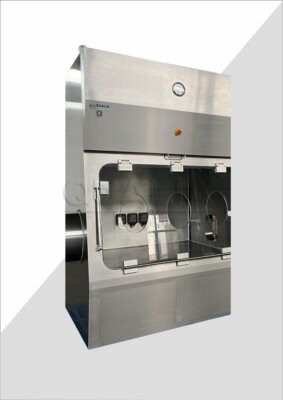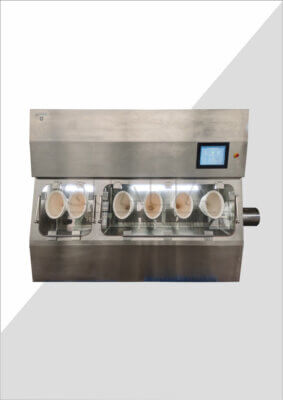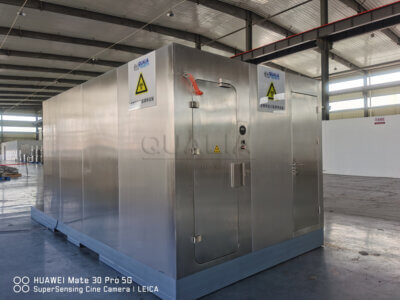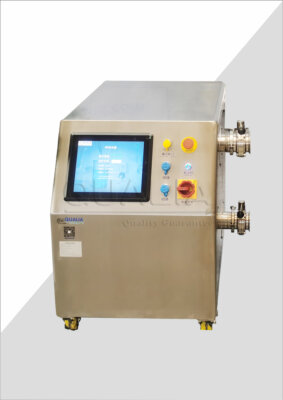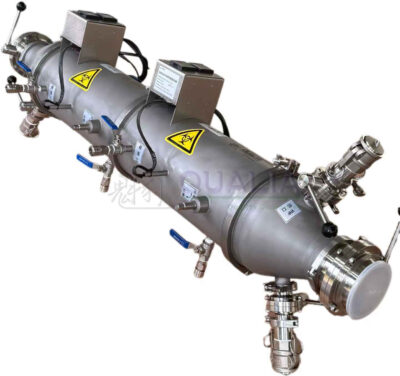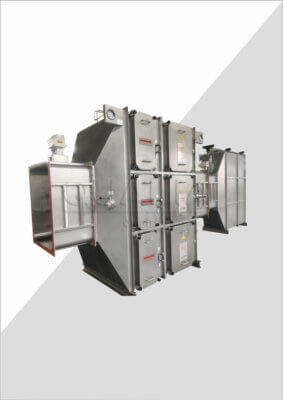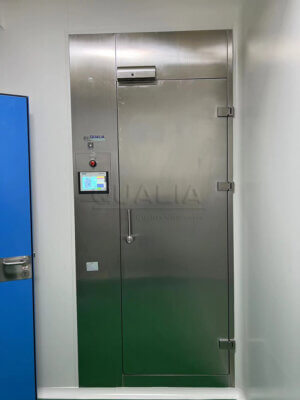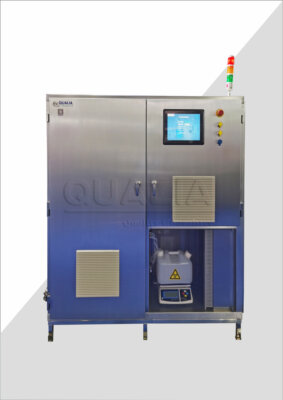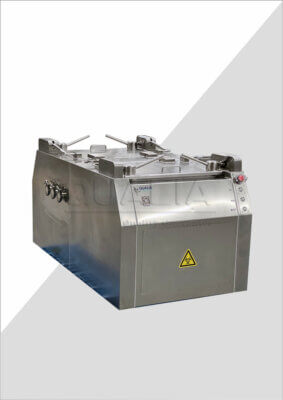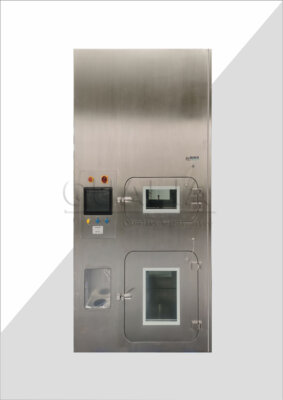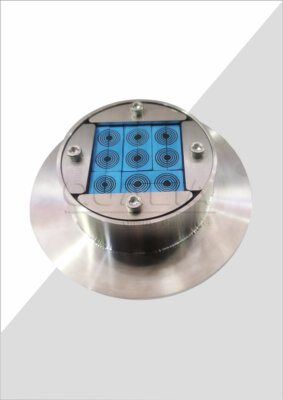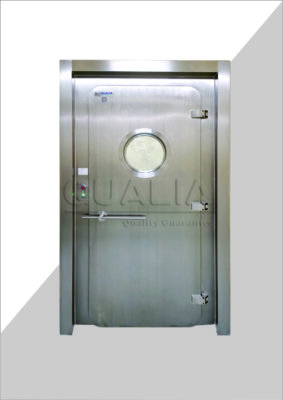Biosafety Level 4 (BSL-4) laboratories are at the forefront of pathogen genomics research, playing a crucial role in our understanding of the most dangerous and infectious diseases known to humanity. These high-containment facilities are designed to handle the deadliest pathogens, such as Ebola, Marburg, and other hemorrhagic fever viruses, which pose significant risks to both researchers and the general public. As technology advances, so do the capabilities of these labs, particularly in the realm of genomic sequencing.
Recent years have seen remarkable progress in BSL-4 laboratory pathogen genomics research, with new techniques and equipment allowing scientists to delve deeper into the genetic makeup of these deadly microorganisms. This advancement has not only improved our ability to identify and characterize pathogens but has also opened up new avenues for developing treatments and vaccines against these formidable adversaries.
The intersection of cutting-edge genomic sequencing technologies and the stringent safety protocols of BSL-4 laboratories has created a unique environment where scientific discovery and public health protection go hand in hand. This article will explore the latest advances in pathogen genomics within BSL-4 settings, the challenges faced by researchers, and the potential impact of this work on global health security.
"BSL-4 laboratories are essential for conducting critical research on highly pathogenic agents, providing a safe environment for scientists to study and develop countermeasures against some of the world's most dangerous diseases."
As we delve into the world of BSL-4 laboratory pathogen genomics research, we'll examine the technological breakthroughs, safety considerations, and future prospects of this vital field. Let's explore the questions that drive this cutting-edge research and the answers that could shape the future of infectious disease management.
What are the latest sequencing technologies used in BSL-4 labs?
The field of genomic sequencing has undergone a revolution in recent years, and BSL-4 laboratories have been quick to adopt these new technologies. Next-generation sequencing (NGS) platforms have become increasingly portable and user-friendly, making them suitable for use within the confines of high-containment facilities.
One of the most significant advancements has been the development of nanopore sequencing devices, which are compact enough to be easily decontaminated and moved in and out of BSL-4 labs. These devices allow for real-time sequencing of pathogen genomes, providing rapid results that can be crucial in outbreak situations.
Another important development is the use of single-cell sequencing technologies, which enable researchers to study the genetic diversity of pathogens at an unprecedented level of detail. This technology has proven particularly valuable in understanding how viruses mutate and evolve within a host.
"The integration of portable sequencing devices in BSL-4 labs has revolutionized our ability to rapidly characterize emerging pathogens and respond to outbreaks in real-time."
Table: Comparison of Sequencing Technologies in BSL-4 Labs
| Technology | Advantages | Limitations |
|---|---|---|
| Nanopore Sequencing | Portable, real-time results | Lower accuracy compared to some other methods |
| Single-cell Sequencing | High resolution of genetic diversity | Complex sample preparation |
| Short-read NGS | High throughput, low error rate | Difficulty with repetitive regions |
| Long-read NGS | Better for structural variants | Higher cost, lower throughput |
The advent of these technologies has significantly enhanced the capabilities of BSL-4 laboratories, allowing for more comprehensive and timely analysis of dangerous pathogens. This has been particularly beneficial in outbreak situations, where rapid identification and characterization of pathogens can save lives.
How do safety protocols impact genomic research in BSL-4 environments?
Safety is paramount in BSL-4 laboratories, and the stringent protocols in place can present unique challenges for genomic research. Researchers must work in positive pressure suits with their own air supply, which can limit dexterity and make fine manipulations difficult. All equipment and materials must be thoroughly decontaminated before leaving the lab, which can potentially damage sensitive sequencing instruments.
Despite these challenges, innovative solutions have been developed to allow for high-quality genomic research within these constraints. For example, QUALIA has developed specialized equipment designed to withstand the harsh decontamination processes used in BSL-4 labs while maintaining the integrity of genetic samples.
"The development of specialized, decontamination-resistant equipment has been crucial in bridging the gap between safety requirements and the need for high-quality genomic data in BSL-4 research."
Table: BSL-4 Safety Measures and Their Impact on Genomic Research
| Safety Measure | Impact on Research | Mitigation Strategy |
|---|---|---|
| Positive Pressure Suits | Limited dexterity | Ergonomic tool design |
| Decontamination Procedures | Potential equipment damage | Resistant materials and enclosures |
| Limited Entry/Exit | Reduced sample throughput | Improved workflow optimization |
| Restricted Material Transfer | Delayed data analysis | In-lab data processing capabilities |
These safety protocols, while necessary, have spurred innovation in lab design and equipment manufacturing. The result has been the development of more robust and efficient systems that can operate effectively within the constraints of a BSL-4 environment, ultimately enhancing the quality and speed of pathogen genomics research.
What insights have been gained from BSL-4 pathogen genomics studies?
BSL-4 laboratory pathogen genomics research has provided unprecedented insights into the biology and evolution of some of the world's most dangerous microorganisms. By sequencing the genomes of viruses like Ebola, Marburg, and Lassa fever, researchers have been able to track their spread, identify mutations that may affect virulence or transmissibility, and develop more effective diagnostic tools.
One of the most significant insights has been the understanding of how these pathogens evolve during outbreaks. By sequencing samples from different patients over time, scientists can map the genetic changes that occur as the pathogen spreads through a population. This information is crucial for developing effective treatments and vaccines.
"Genomic studies in BSL-4 labs have revealed critical information about the mutation rates and evolutionary patterns of high-risk pathogens, informing our strategies for containment and treatment."
Table: Key Insights from BSL-4 Pathogen Genomics Research
| Pathogen | Insight Gained | Potential Impact |
|---|---|---|
| Ebola Virus | Mutation rates during outbreaks | Improved vaccine design |
| Marburg Virus | Host adaptation mechanisms | New therapeutic targets |
| Lassa Fever Virus | Geographical strain variations | Enhanced diagnostic tools |
| Nipah Virus | Zoonotic transmission patterns | Better outbreak prediction |
These insights have not only advanced our scientific understanding but have also had practical applications in public health. For instance, the rapid sequencing of the SARS-CoV-2 genome in high-containment labs early in the COVID-19 pandemic was crucial in developing diagnostic tests and vaccines in record time.
How are bioinformatics and data analysis adapted for BSL-4 research?
The integration of bioinformatics and data analysis into BSL-4 research presents unique challenges due to the isolated nature of these facilities. Traditional approaches often involve transferring data out of the lab for analysis, which can be time-consuming and potentially compromise biosecurity.
To address these issues, BSL-4 labs are increasingly incorporating on-site data processing capabilities. High-performance computing systems are being installed within the containment area, allowing for real-time analysis of genomic data. This approach not only speeds up the research process but also enhances biosecurity by keeping sensitive data within the controlled environment.
"The development of in-situ bioinformatics capabilities in BSL-4 labs has dramatically accelerated the pace of pathogen genomics research, enabling rapid data analysis without compromising biosecurity."
Table: Bioinformatics Adaptations for BSL-4 Research
| Adaptation | Purpose | Benefit |
|---|---|---|
| On-site High-Performance Computing | Real-time data analysis | Faster results, enhanced security |
| Specialized Software | Automated pathogen identification | Reduced human error, quicker response |
| Cloud-based Secure Platforms | Collaboration with external experts | Broader expertise without compromising containment |
| AI-assisted Analysis | Pattern recognition in large datasets | Identification of subtle genomic features |
These adaptations have not only improved the efficiency of BSL-4 research but have also enhanced the ability of scientists to collaborate on a global scale. Secure, cloud-based platforms allow researchers to share data and insights with colleagues around the world, fostering a more coordinated approach to tackling emerging infectious diseases.
What are the challenges in developing sequencing protocols for unknown pathogens?
One of the most daunting challenges in BSL-4 laboratory pathogen genomics research is developing sequencing protocols for unknown or emerging pathogens. When faced with a novel microorganism, researchers must quickly devise methods to isolate, amplify, and sequence its genetic material without prior knowledge of its characteristics.
This process often involves a combination of broad-spectrum approaches and rapid iteration. Universal primers that can bind to conserved regions across a wide range of pathogens are often employed as a starting point. From there, researchers can use techniques like metagenomic sequencing to identify and characterize the unknown pathogen amidst a complex mixture of genetic material.
"The ability to rapidly develop and adapt sequencing protocols for unknown pathogens is crucial for our preparedness against emerging infectious diseases and potential bioterrorism threats."
Table: Strategies for Sequencing Unknown Pathogens
| Strategy | Description | Advantage |
|---|---|---|
| Metagenomic Sequencing | Sequencing all genetic material in a sample | Can identify novel pathogens |
| Universal Primers | Primers that bind to conserved regions | Broad applicability across pathogen types |
| Enrichment Techniques | Methods to increase target pathogen concentration | Improves detection of low-abundance pathogens |
| Real-time Adaptive Protocols | Adjusting methods based on initial results | Allows for rapid optimization |
The development of these protocols requires a deep understanding of molecular biology, bioinformatics, and the specific challenges of working in a BSL-4 environment. It's a field that demands constant innovation and adaptation, as each new pathogen may present unique challenges that require novel approaches.
How does BSL-4 genomics research contribute to vaccine development?
BSL-4 laboratory pathogen genomics research plays a crucial role in the development of vaccines against some of the world's most dangerous diseases. By providing detailed genetic information about these pathogens, this research lays the foundation for designing effective and safe vaccines.
One of the primary contributions of genomics research is the identification of potential vaccine targets. By analyzing the genomes of pathogens, researchers can pinpoint specific genes or proteins that are essential for the pathogen's survival or virulence. These targets can then be used to develop vaccines that stimulate a protective immune response.
"Genomic insights from BSL-4 research have been instrumental in accelerating vaccine development timelines, as demonstrated by the rapid creation of vaccines during recent outbreaks."
Table: Genomics Contributions to Vaccine Development
| Contribution | Description | Impact on Vaccine Development |
|---|---|---|
| Antigen Identification | Pinpointing potential vaccine targets | More precise vaccine design |
| Strain Variation Analysis | Understanding pathogen diversity | Broader spectrum vaccines |
| Virulence Factor Discovery | Identifying key pathogenicity genes | Targeted attenuation for live vaccines |
| Mutation Rate Assessment | Predicting vaccine efficacy over time | Improved long-term vaccine strategies |
The BSL-4 laboratory pathogen genomics research conducted in these high-containment facilities has been particularly valuable in developing vaccines against emerging threats. For instance, the rapid sequencing of the Ebola virus during the 2014-2016 West African outbreak was crucial in the development and testing of several vaccine candidates.
What are the future prospects for BSL-4 pathogen genomics research?
The future of BSL-4 laboratory pathogen genomics research is bright, with several exciting developments on the horizon. As sequencing technologies continue to advance, we can expect even more sophisticated tools to be adapted for use in high-containment environments.
One promising area is the integration of artificial intelligence and machine learning into genomic analysis. These technologies could significantly enhance our ability to predict pathogen behavior, identify potential pandemic threats, and design targeted interventions.
Another area of focus is the development of portable, field-deployable BSL-4 labs equipped with advanced sequencing capabilities. These mobile units could be rapidly deployed to outbreak zones, allowing for on-site genomic analysis and real-time epidemiological tracking.
"The convergence of advanced genomics, AI, and mobile containment technologies promises to revolutionize our ability to respond to global health threats, bringing BSL-4 capabilities to the forefront of outbreak management."
Table: Emerging Trends in BSL-4 Pathogen Genomics Research
| Trend | Potential Impact | Challenges |
|---|---|---|
| AI-assisted Genomic Analysis | Faster pathogen characterization | Ensuring AI reliability in critical situations |
| Portable BSL-4 Labs | Rapid on-site outbreak response | Maintaining stringent safety standards in field conditions |
| Synthetic Biology Tools | Novel vaccine and therapeutic development | Ethical considerations and biosecurity risks |
| Multi-omics Integration | Comprehensive pathogen understanding | Complex data integration and interpretation |
As these technologies mature, we can anticipate a new era of pathogen research where genomic insights can be rapidly translated into public health actions, potentially averting pandemics before they begin.
Conclusion
The field of BSL-4 laboratory pathogen genomics research stands at the cutting edge of our fight against infectious diseases. The advances made in sequencing technologies, bioinformatics, and laboratory protocols have dramatically enhanced our ability to study, understand, and combat some of the world's most dangerous pathogens.
From the development of rapid sequencing methods for unknown pathogens to the integration of AI in genomic analysis, the innovations emerging from BSL-4 labs are reshaping our approach to global health security. These advancements not only contribute to our scientific knowledge but also have tangible impacts on vaccine development, outbreak response, and pandemic preparedness.
As we look to the future, the continued evolution of BSL-4 pathogen genomics research promises to provide us with even more powerful tools in our arsenal against infectious diseases. The challenges are significant, but so are the potential rewards. With each genomic insight gained, we move closer to a world better equipped to predict, prevent, and respond to emerging health threats.
The work conducted in these high-containment laboratories, while often unseen by the public eye, is vital to our collective safety and well-being. As we continue to push the boundaries of what's possible in pathogen genomics, we can look forward to a future where even the most formidable infectious diseases can be understood, managed, and ultimately overcome.
External Resources
- The BSL-4 high security laboratory – BNITM – This page describes the BSL-4 laboratory at the Bernhard Nocht Institute for Tropical Medicine (BNITM), including its capabilities for handling high-risk pathogens like Ebola and Lassa virus, and its involvement in various research and infrastructure projects.
- The BSL 4 laboratory at the Robert Koch Institute – RKI – This resource details the BSL-4 laboratory at the Robert Koch Institute, focusing on its design, safety measures, and the types of pathogens it handles, such as Ebola, Lassa, and Nipah viruses. It also highlights the laboratory's role in diagnostics and research.
- Significance of High-Containment Biological Laboratories – This article discusses the importance of high-containment biological laboratories, including BSL-4 labs, for diagnosing and researching highly pathogenic agents. It covers the technical, funding, and biosecurity challenges associated with these labs.
- Utility and perspectives of NGS-based methods in BSL-3 and BSL-4 laboratories – This academic article explores the use of next-generation sequencing (NGS) methods in BSL-3 and BSL-4 laboratories for diagnosing and researching dangerous pathogens. It discusses the advantages and challenges of implementing NGS in these high-security environments.
- Visiting biosafety level-4 laboratories – Virology Blog – This blog post provides a detailed description of the operations and safety protocols within a BSL-4 laboratory, including how samples are handled and the use of protective suits and dunk tanks for material transfer.
Related Contents:
- Emerging Pathogens: BSL-3 Lab Identification
- Vaccine Development in BSL-3 Labs: Latest Studies
- Emerging Pathogens: BSL-4 Lab Identification Methods
- Biodefense Research in BSL-4 Labs: Protecting Public
- Zoonotic Disease Studies in BSL-3 Labs: Insights
- Vaccine Development in BSL-4 Labs: From Bench to Trials
- Modular BSL-4 Labs: Cutting Costs Without Compromising
- BSL-3 Biodefense: Pioneering Research Projects
- Portable BSL-3 Labs: Flexible Containment Options


